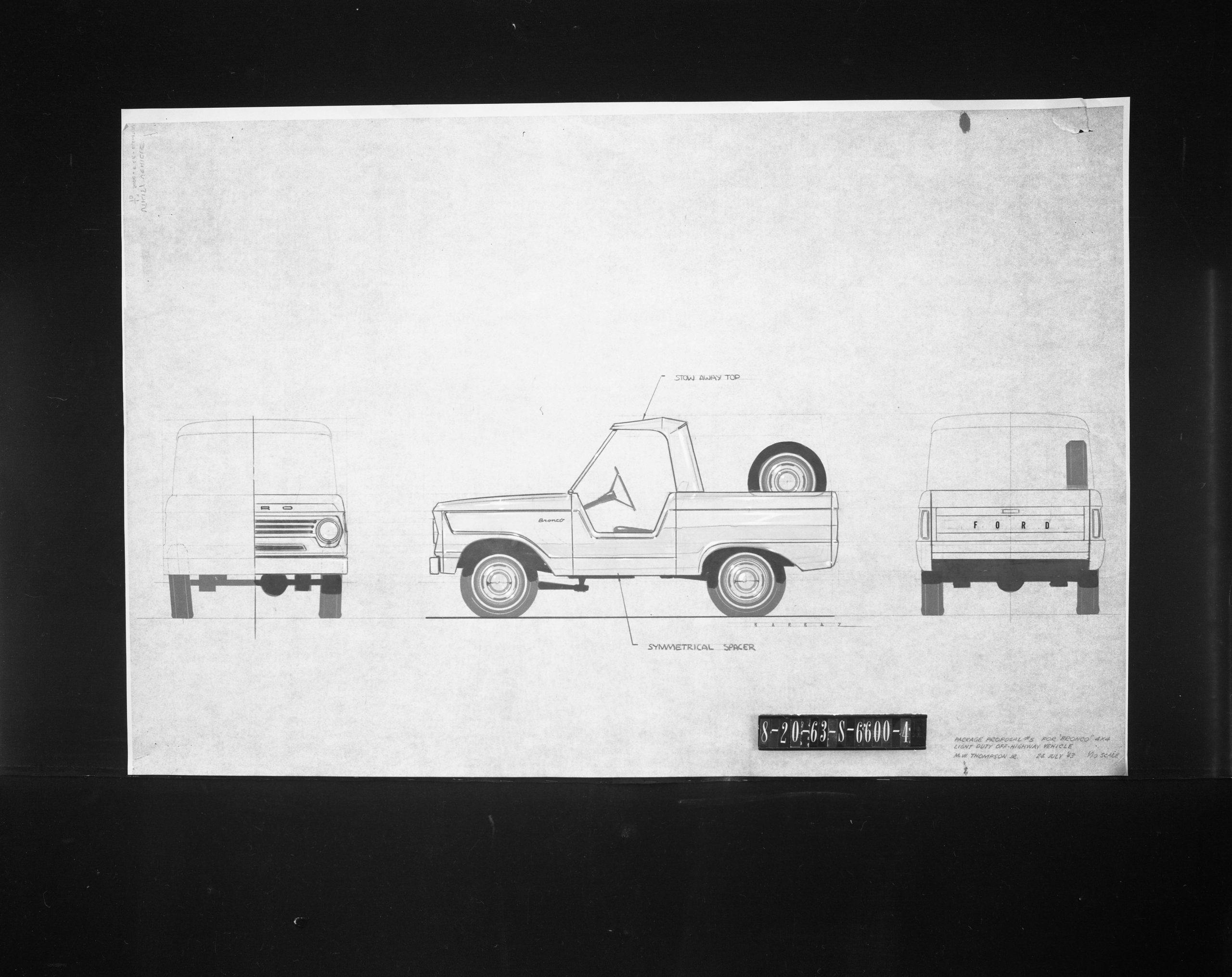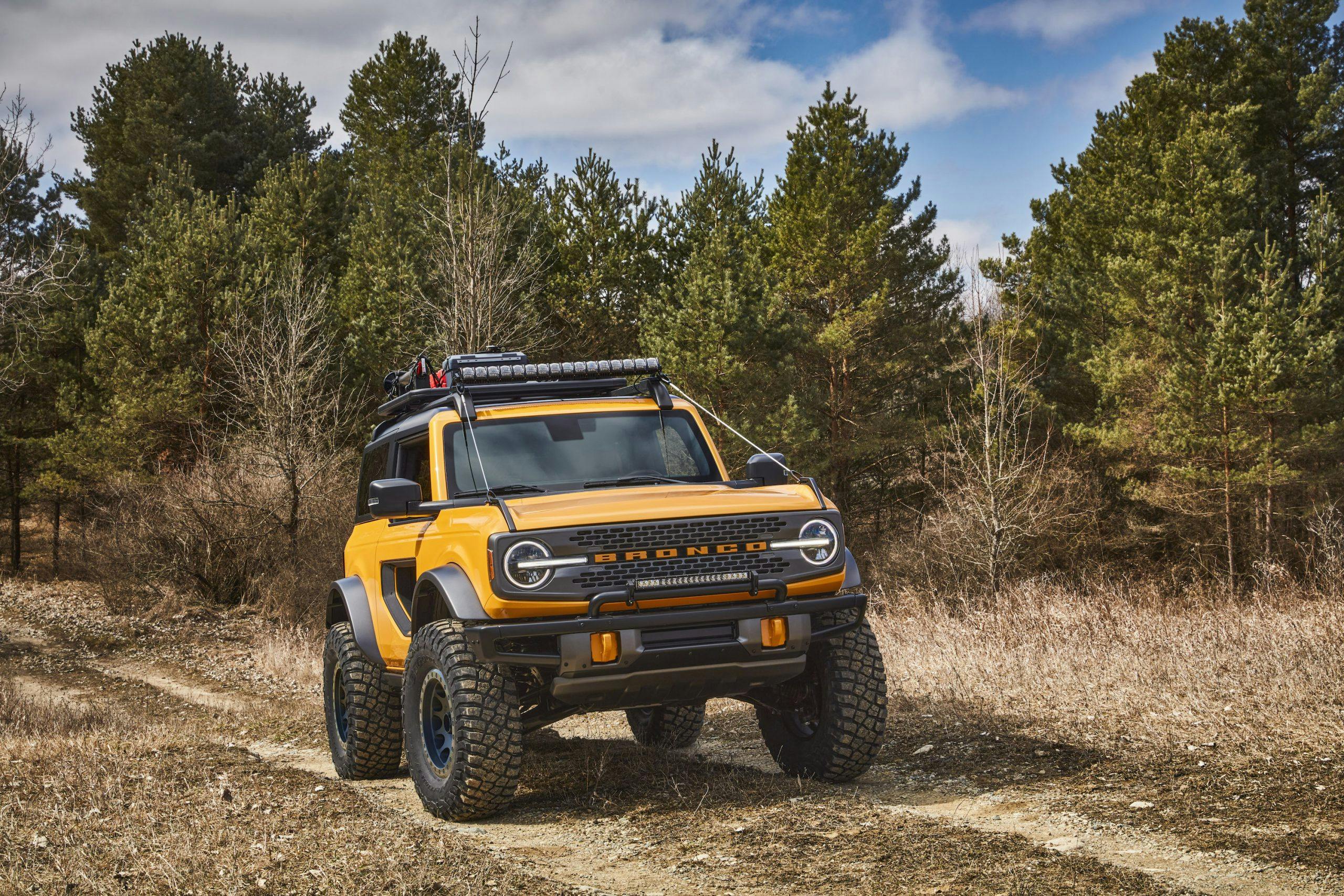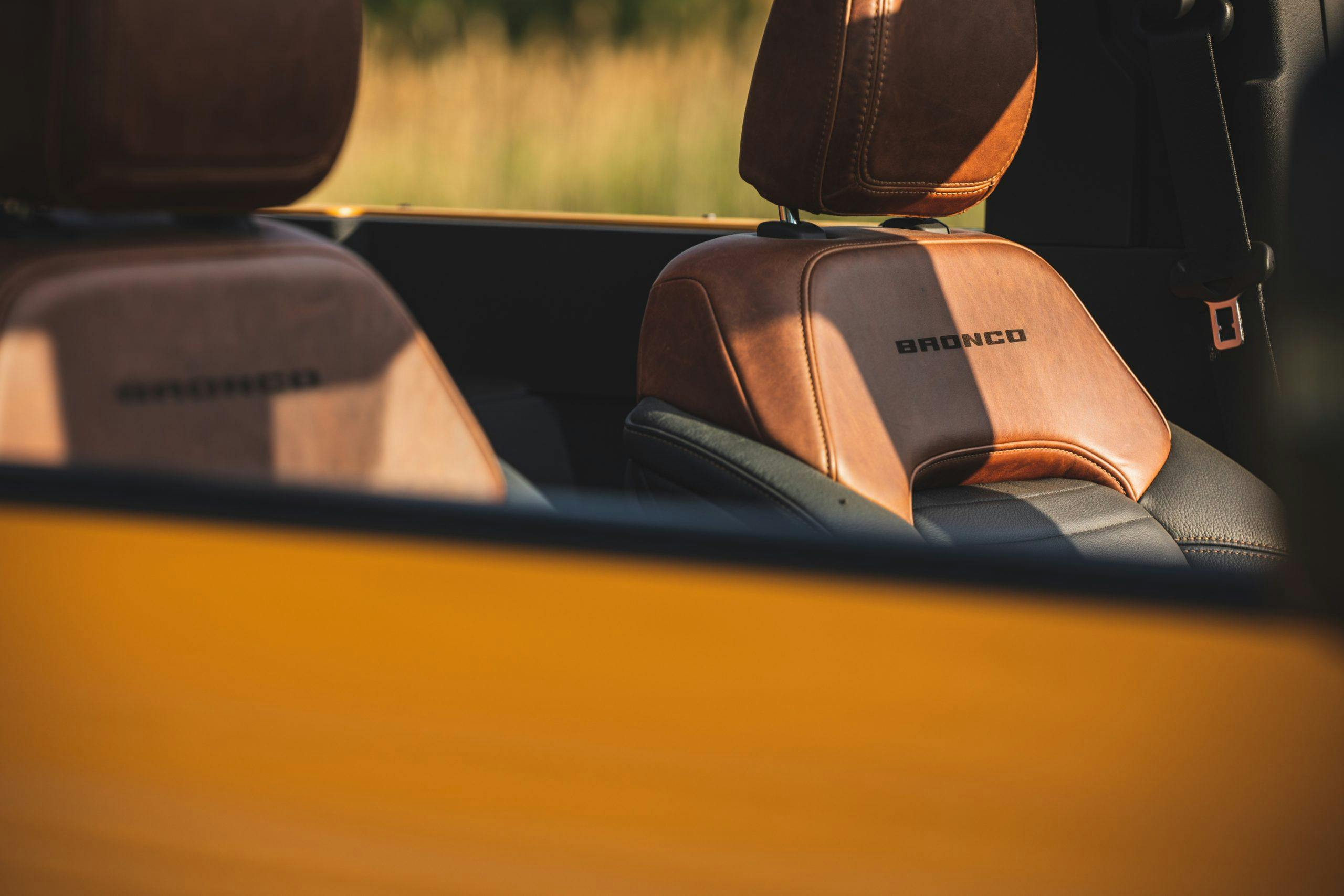Media | Articles
Skipping generations: Bronco clay modeler keeps it in the family
One look at the new Bronco is enough to demonstrate that Ford’s reborn off-roader bears a family resemblance to the original boxy brute from 1966. Family, however, is a bigger part of that story than you might think. Molly Gillies, a clay modeler in Ford’s design department who worked on the 2021 model, isn’t the first of her kin to shape a Bronco into physical form. Her grandfather, Frank DeBono, was hired as a clay modeling supervisor at Ford in 1958. He was part of the team that brought the original ’66 model to life.

For Gillies, the chance to work on the latest Bronco was a dream come true. “I’ve always had a strong tie to the Bronco,” she says. “It’s been my favorite vehicle since I was a kid. I’ve always loved square bodies, which have such a tough stance. I’ll turn my head all the way around to check one out, even if it’s rusty.
“Working on the new Bronco was a really special time to be in the studio, having the chance do I job I love on a vehicle I love.” The connection she feels with her grandfather is a big part of that experience. Growing up she became familiar with a photo of her grandfather carving out a Bronco logo, with various sketches tacked on the wall behind him.
Marketplace
Buy and sell classics with confidence
As a kid, Gillies spent a lot of time with her grandfather. His creative passion and diligent work ethic clearly rubbed off. “He can sit down for hours with just sandpaper and a piece of wood. He likes to make things perfect,” she says. “We’d go to his house and his whole basement was set up like a studio, with an industrial sewing machine and a woodshop down there. That’s where I learned the tricks and the tools of the trade, and how to use them in the correct way.”
Gillies, of course, did go to school for formal training, receiving her fine art degree from Detroit’s College for Creative Studies. In her junior year she started working with glass and clay, putting her meticulous hands to work with the materials and skills that DeBono had introduced to her at a young age. At the point, her sights were set on making automotive clay modeling her career. “I just remember thinking, ‘I could get to do this all day long? This is so cool!'”

In the summer of 2016, the summer before her senior year, Gillies did an internship at Ford, and from there her excitement only grew. She knew the Blue Oval was the right fit. “I just fell in love with the people there, and it was such a spectacular learning experience,” says Gillies. When she arrived at Ford full-time in 2019, she joined a team with several staff members—including her manager—who had been personally hired by DeBono.
“Everything he taught me prepared me for the job,” she says. “He always told me to focus on what you love and what you know how to do.
“I love it. The job is so collaborative, and you’re constantly working with new ideas and methods, working hand in hand with the designers.” Sketch modeling is something she particularly enjoys. “It’s you and the designer’s mind, watching something evolve in a day.”

DeBono was at Ford from 1958 until his retirement on January 1, 1999. He worked on a large variety of projects in addition to the Bronco, including the 1960s Ford Thunderbird, vehicles in the Small Car studio in the 1970s, several truck and transit models, and the SN95 Mustang.
In their heyday, master modelers like DeBono made their own tools, and doing so was a major source of pride. He gave his tools—rakes and steels—to his granddaughter to use.
“He gave them to me, didn’t say much, just planted the seed,” Gillies says. “They’re a constant reminder of our connection, and that these are legacy tools. I use them every day, and it’s cool because he made them all in the days when that was really a craft. I’ve made a few tools of my own so far, but I want to get my collection up to par with my grandfather’s.”
Modelers use rakes and steels of varying shapes and sizes to contour the clay, shaping and locking in the big picture of the vehicle. Once that’s finished, the gaps can be filled with details and specific refinements. Manipulating the clay in this way takes finesse. To make the clay model look like a finished car, it gets a kind of patterned film wrap from 3M called DI-NOC that provides a sense of texture and realism.

Although modern clay modelers use many of the same tools and methods as they did 55 years ago when the original Bronco was in development, technology today plays a significant role in everything from digital design to machine mills.
“The way they used to clay model was very intense, and it used to required two to three times the amount of people in the studio,” explains Gillies. “Machines today help us get to the final product faster, but with the old methods they’d still be able to get within a millimeter of precision—by hand. That’s just incredible to me. Working with clay is putting your passion into something industrial—zoning in and focusing on putting the love back into the clay.”

Seeing the new Bronco out in the world now is, perhaps, somewhat bittersweet for Gillies. Her grandfather died earlier this month, on July 13, the same day Ford unveiled the Bronco.
Toward the end, DeBono suffered from dementia. When his family told him that his granddaughter, Molly, had gotten the job at Ford as a clay modeler, he was ready with an answer: “I knew she was a good one.”































































